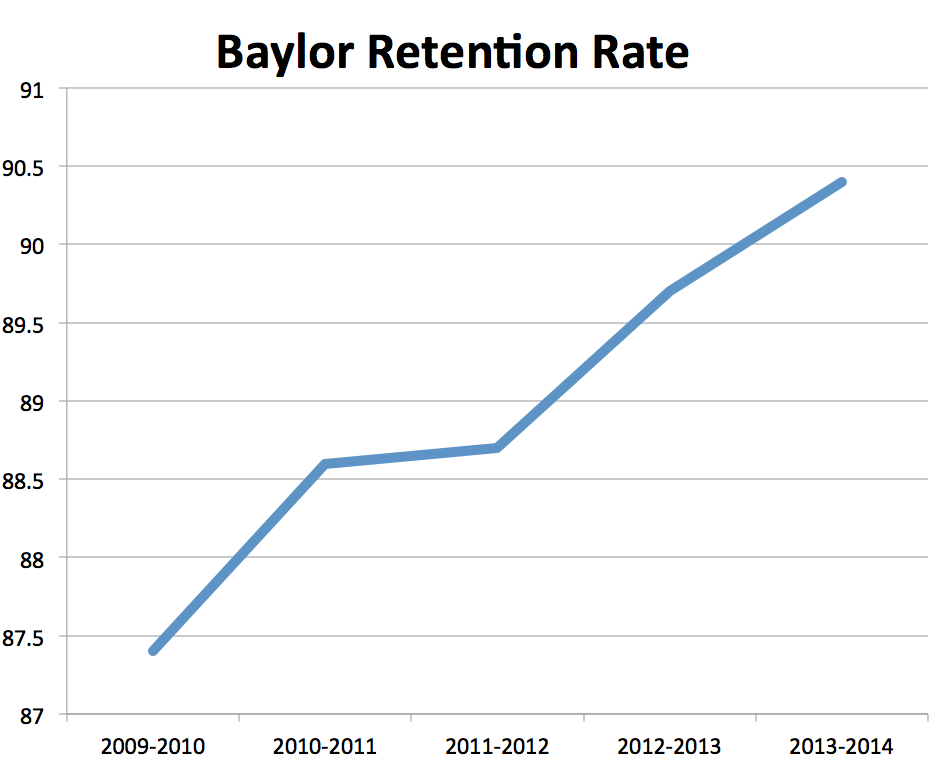
By Shannon Barbour
Reporter
The university achieved an unprecedented 96.2 percent retention rate last semester, passing a previous retention record set in the spring of 2014. In addition to rising retention rates, diversity rates have also increased among the undergraduate population to 35.5 percent, according to the Baylor Institutional Research and Testing.
According to the Baylor Institutional Research and Testing, Baylor’s growing rate of diversity increased to a record of a record 35.5 percent in fall 2014 and is expected to rise this spring.
Diversity rates are calculated using racial, ethnic, gender and religious minority enrollments, while retention rates are based on the number of students who choose to return to Baylor each semester and year.
One of the biggest causes of the increase in retention are programs started by the university to help minorities feel more connected to campus, said Courtney Pace Lyons, assistant director of student success.
Programs and events like Kaleidoscope help students feel socially connected and make them aware of Baylor’s resources, Lyons said.
“Kaleidoscope is purposefully designed to attract students who are in minority groups,” said Lyons. “And it’s very intentional. There’s a lot of encouragement to connect with parents at the event too, to help them understand the college process.”
In addition to making the student body more diverse, Lyons said Baylor intends to make faculty and staff more reflective of the student body.
“That is something Baylor is very committed to,” said Lyons. “Is providing a diverse faculty and staff to better serve a diverse student body.”
Dr. James Sorelle, history professor and co-chair of the Campus Diversity Committee, said the committee is devoted to promoting diversity once students and faculty are members of the Baylor community.
Sorelle said the committee does so by organizing and funding events and organizations that relate to promoting and continuing diversity. One of the events that the committee organizes is the Cultural Connections Banquet held every spring.
Sorelle said he has seen Baylor’s diversity improve from when he first came to Baylor.
“When I came here, I bet [the diversity percentage] wasn’t 15,” Sorelle said. “That’s a pretty significant change. It does reflect the intentionality of the university to broaden its appeal to a wide range of backgrounds.”
Baylor and the Paul L. Foster Success Center are working to continue the trend among retention rates even more by introducing a new summer program.
“This summer we’re debuting the First In Line Summer Advantage program, where students can actually earn six hours of college credit,” said Lyons. “Incoming first-generation students will be part of a summer learning community program.”
The program was created to help students who are the first in their families to go to college. Lyons said the goal of this new program is to encourage new students to feel connected to campus through academic and personal success, which will help improve retention rates.
This program will be held during this summer’s second session with a 50 percent tuition discount. The session will offer variety of classes including introductory courses in religion, sociology and speech.
“First-generation students are a higher percent minority than the traditional Baylor student,” said Lyons. “I do think that it will help us improve our diversity on some level.”





